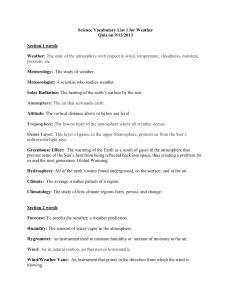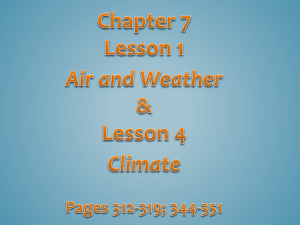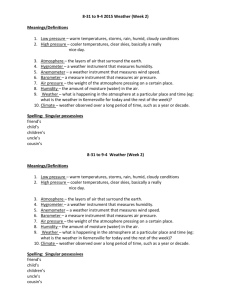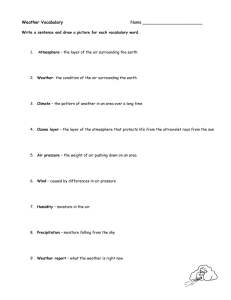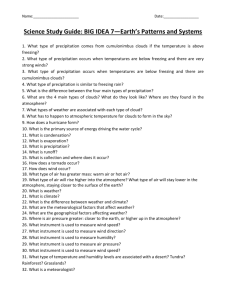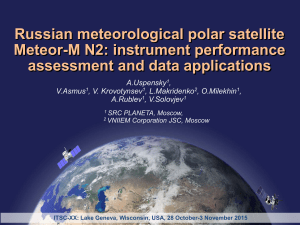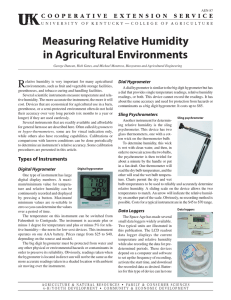Review Sheet for Weather and Climate Vocabulary Almost all
advertisement
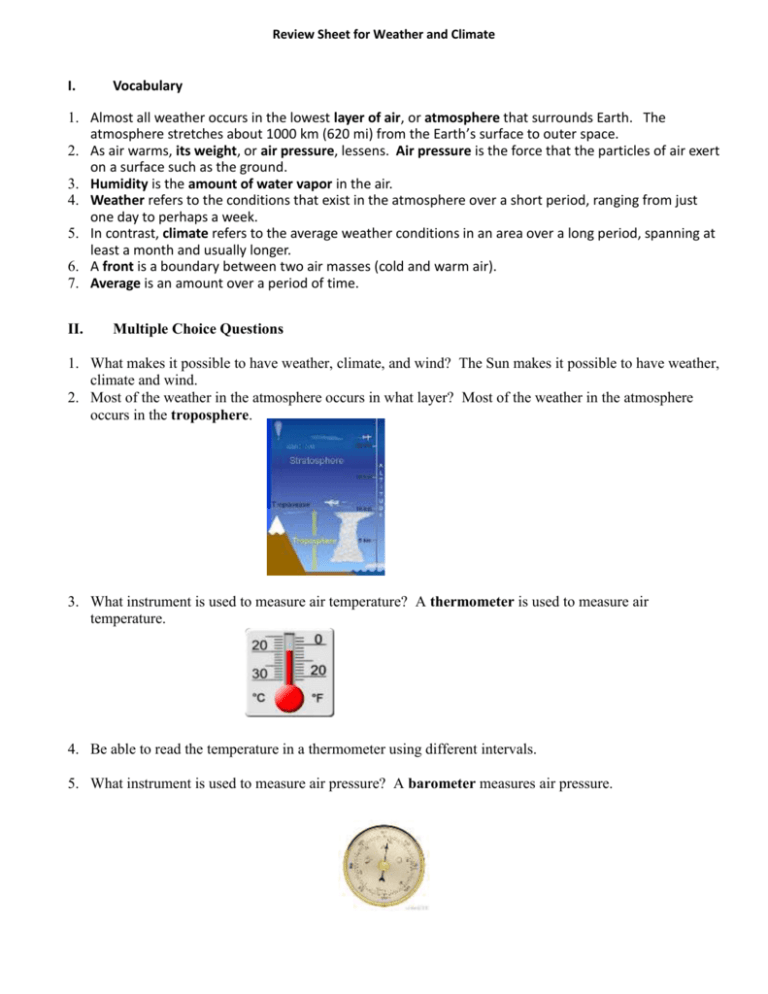
Review Sheet for Weather and Climate I. Vocabulary 1. Almost all weather occurs in the lowest layer of air, or atmosphere that surrounds Earth. The atmosphere stretches about 1000 km (620 mi) from the Earth’s surface to outer space. 2. As air warms, its weight, or air pressure, lessens. Air pressure is the force that the particles of air exert on a surface such as the ground. 3. Humidity is the amount of water vapor in the air. 4. Weather refers to the conditions that exist in the atmosphere over a short period, ranging from just one day to perhaps a week. 5. In contrast, climate refers to the average weather conditions in an area over a long period, spanning at least a month and usually longer. 6. A front is a boundary between two air masses (cold and warm air). 7. Average is an amount over a period of time. II. Multiple Choice Questions 1. What makes it possible to have weather, climate, and wind? The Sun makes it possible to have weather, climate and wind. 2. Most of the weather in the atmosphere occurs in what layer? Most of the weather in the atmosphere occurs in the troposphere. 3. What instrument is used to measure air temperature? A thermometer is used to measure air temperature. 4. Be able to read the temperature in a thermometer using different intervals. 5. What instrument is used to measure air pressure? A barometer measures air pressure. 6. What instrument is used to measure the amount of precipitation? A rain gauge is used to measure the amount of precipitation. 7. What instrument is used to measure humidity in the air? A hygrometer is used to measure humidity in the air. 8. What instrument is used to measure direction of the wind? A wind vane is used to measure air the direction of the wind. 9. What instrument is used to measure wind speed? An anemometer is used to measure wind speed. 10. High air pressure is associated with what type of weather? Low air pressure? 11. Be able to identify a sea breeze and a land breeze in a diagram. 12. What type of weather will occur when a cold front and a warm front collide? Storms and precipitation will occur along the front. 13. Be able to analyze and interpret the following weather map. 14. Be able to distinguish between various scenarios that describe either weather or climate. III. Bonus Points 1. What are the 3 types of clouds? 2. What are some agents of weathering, erosion, and deposition? 3. Name the processes that describe the changes that occur in matter and heat and pressure are added and subtracted. 4. Name some cycles that are possible due to the power of the Sun. 5. Name some of the physical properties of matter that can be used to separate a mixture.
